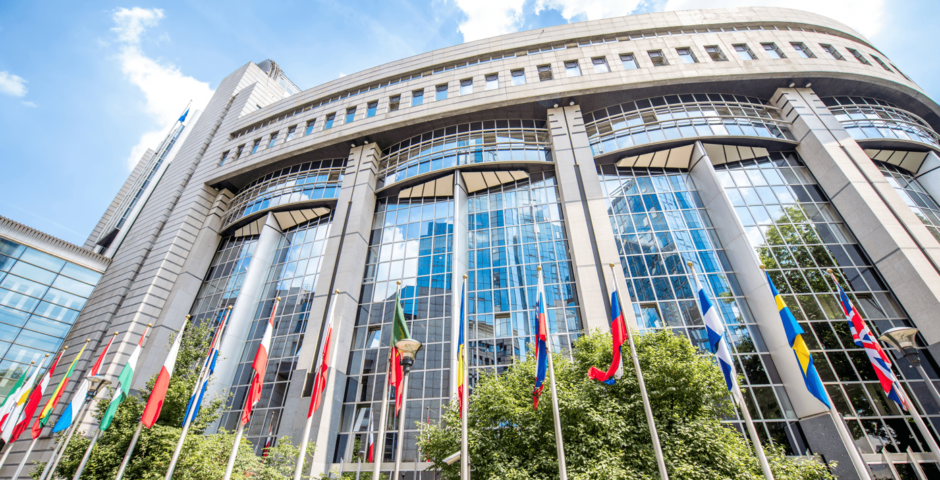The European Parliament: what functions does it have?

Everything you need to know about the European Parliament.
In June 2024, we can go to the polls again to vote for the European Parliamentary elections, but what are we actually voting for? In recent years, the European Union (EU) has gained the reputation of being a complicated organisation, made up of a hotchpotch of different institutions that all have slightly different functions. To get you started, here we explain what the European Parliament is and what its functions are to ensure that you will know what you are voting for.
The European Parliament plays a significant role in EU decision-making. It was founded in 1959 as the General Assembly of the European Coal and Steel Community, and in 1962 it was renamed the European Parliament. Since 1979, members of the European Parliament have been directly elected by residents of member states every five years to reflect the interests of the European people. The Parliament now has 705 members, however, due to Europe’s expanding population, this number will be expanded to 720 following the 2024 elections. Countries with a considerable rise in population size will earn additional seats.
What functions does the Parliament have?
Unlike most national parliaments, the European Parliament cannot make legislative proposals. This role is reserved exclusively for the European Commission (EC). However, the Parliament plays an important role in the overall legislative process. One of the main roles of the European Parliament is to debate legislative proposals. Parliament can pass, reject or amend laws. So while no new laws are created here, laws cannot be passed without Parliament either. As recently as late November, for example, Parliament rejected a Commission plan to halve pesticide use in agriculture by 2030.
However, this is not the sole function of the European Parliament. The Parliament, along with the Council of Ministers, approves the yearly EU budget. The EC prepares the budget each year and submits it to the Parliament and the Council of Ministers in April. They consider it and, if necessary, make amendments. The Parliament then controls the various parts of the EU, appoints the European Ombudsman, and certifies the president and vice president of the European Central Bank.
So far, it appears that the Parliament mainly controls and approves or rejects the laws proposed by the Commission but your voice has more influence on the entire decision-making process than you might think. Although laws are drafted and implemented by the European Commission, the Parliament determines the composition of the European Commission. It does this together with the European Council, which includes the leaders of all member states; the Council nominates members and the Parliament has to approve them. In addition, the Parliament can force the Commission to resign. This has never happened before, but in 1999 the EC itself decided to resign en masse following a corruption scandal, even before Parliament had time to decide on it.
Who sits in Parliament?
Currently, Roberta Metsola from Malta is the President of Parliament. The president, along with 14 vice presidents, is appointed for a term of two and a half years, exactly half the total term of the Parliament. The president’s job is to represent Parliament to other European institutions and the outside world. In addition, after the Parliament’s approval, the president signs the EU budget, which then comes into effect.
As mentioned earlier, there will be 720 members in Parliament after the 2024 elections. The number of members each member state will have is roughly proportional to its population. The emphasis is on ‘approximately’ as no country can have more than ninety-six or fewer than six members. Currently, Germany is the only country with the maximum number of members and Cyprus, Luxembourg and Malta have a minimum of six.
Members are grouped within the Parliament not by nationality but by political views. In total, there are seven political groups on the political spectrum. In addition, several members are not part of any political group; they are also called non-aligned members. If you want to know more about the different groups, stay tuned! There will be another article with all the information you need on this.
How does the Parliament work?
Every month, Members of Parliament (MEPs) meet for a week, alternately in Brussels and Strasbourg, for plenary sessions where all members are present. During these plenary sessions, they vote on legislative proposals from the European Commission and any amendments made by the committees that are part of the Parliament. There are twenty standing committees, each responsible for a specific policy area, such as foreign affairs, development cooperation, economic and monetary affairs and public health. The Parliament can also appoint subcommittees and special committees to deal with specific topical issues, such as a committee on the impact of the Covid-19 pandemic.
Committees consist of between twenty-five and eighty-eight MPs and elect their own chairperson. The make-up of committees reflects the seat distribution of the entire Parliament, which means that, in principle, the largest political group in the Parliament also has the most members in a committee. Parliamentary committees meet once or twice a month in Brussels to scrutinise and, if necessary, amend laws. These scrutinised and adjusted laws are then voted on, by all MEPs, at plenary sessions.
So, that was the European Parliament in a nutshell. As you have read, the European Parliament is crucial for passing laws. Although MEPs do not come up with these laws themselves, European legislation cannot exist without Parliament. That is why it is important to vote in the upcoming elections because even though it may seem like distant politics, your voice counts in shaping European policy.
Sabine Herder has a master’s in Crisis and Security Management from Leiden University and is now doing a master’s in European Policy at the University of Amsterdam. Before this, she obtained a bachelor’s degree in Liberal Arts and Sciences with a major in International Relations.
Image: Shutterstock




